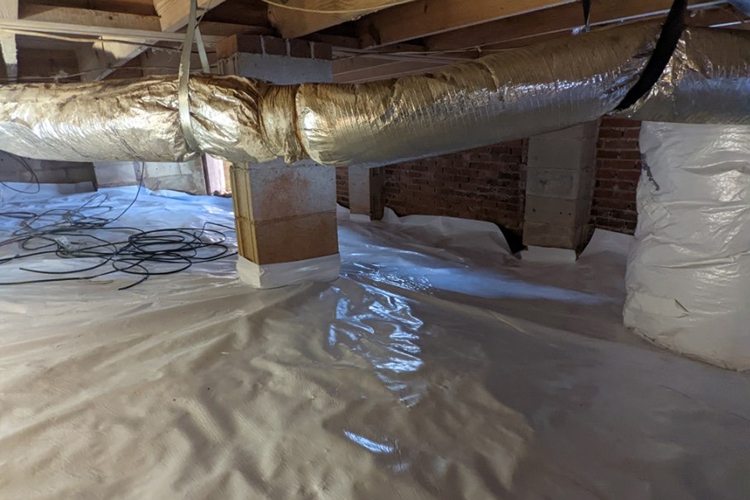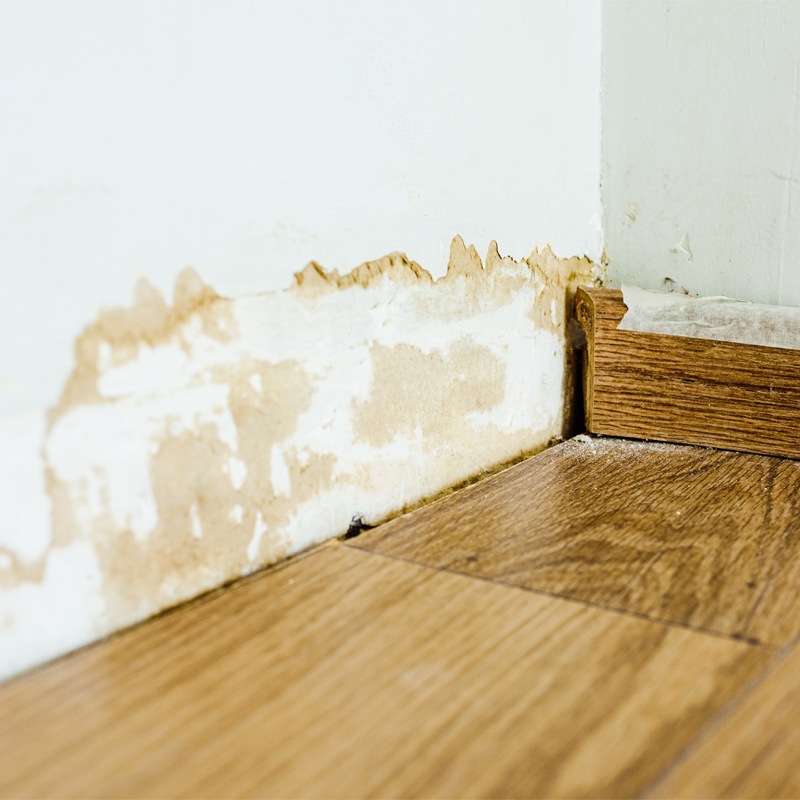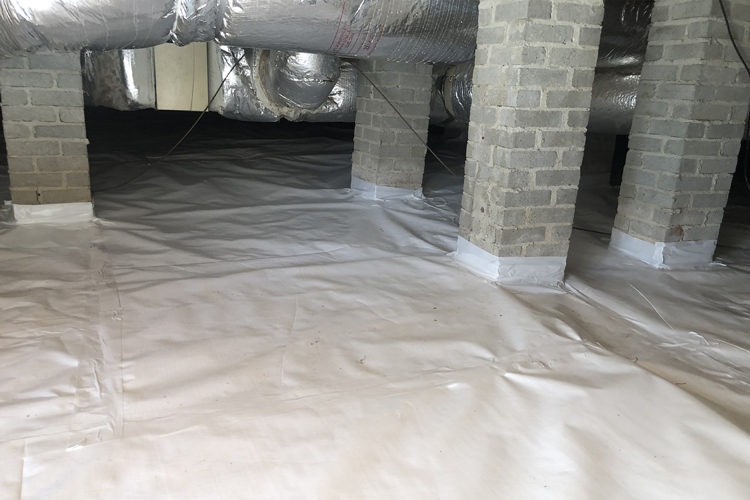Signs of Mold in Your Crawl Space
Your home’s crawl space is out of sight and thus out of mind – but that doesn’t mean that whatever happens down there doesn’t affect you! High humidity can lead to serious problems if crawl space mold takes hold!
We’ll explore the common causes of mold and signs that might indicate you’ve got a problem brewing under your floorboards. While the following signs are pretty good indicators that you’ve got a problem, it’s best not to wait. A vapor barrier is a reliable way to mitigate crawl space humidity and prevent mold from growing in the first place!

What causes mold to develop in a crawl space?
Molds are some of the most widespread organisms on earth and can be found nearly everywhere. The way molds reproduce is by releasing microscopic spores which are tiny enough to be easily spread through the air. When these mold spores settle on a suitable surface they will grow into a full blown colony.
There are thousands of different types of mold and hundreds of different species commonly cohabitate with humans. The common feature amongst these molds is that they thrive in environments with a relative humidity above 60%. As long as the moisture levels are sufficiently high, the mold spores will germinate and turn into a mold colony.
What are the signs of mold in your crawl space?
A surefire way to tell if there is mold in your crawl space is to go crawling! However, a spelunking expedition into a moldy crawl space isn’t most people’s idea of a good time, so here are some signs of mold that can be detected from inside your home:
Musty odors
This is simultaneously the most overlooked sign of crawl space mold and the most common way that homeowners learn they have a mold problem. If your home has developed (or has always had!) a musty smell that just won’t go away, then you may have mold growing where you can’t see it!
To rule out the possibility of mold, it is recommended that you have a professional conduct a crawl space inspection.

Water stains on baseboards
Water damage and mold go hand in hand, so if you see water stains on your baseboards then you know you have a problem! It’s essential that you identify the source of the leak and get it fixed ASAP! If you wait too long then not only will you need to get the leak repaired, but you’ll likely have to undertake costly mold remediation as well.
Warped or sagging floors
As we’ve mentioned before, mold needs humidity to live, and humid conditions can cause lumber framing to warp or rot. If your floor joists begin to twist or your subfloor starts to sag then you’ll likely notice dips, soft spots, or other irregularities on your floors.
If you’ve noticed that your floors have gone out of true then something is amiss. Act quickly because water damage can rapidly turn into a serious mold issue.
Increased bugs and pests
Mold loves high humidity, but know what else does too? Cockroaches, termites, and all sorts of creepy crawlies!
If you’ve had a recent and unexplained pest infestation this may be indicative of excess moisture in your crawl space, and as we’ve explained, moisture leads to mold!
Discoloration on walls and insulation
Wet drywall and damp insulation are perfect breeding grounds for mold. Water stains on your walls are a clear sign of a problem, but even high humidity can be enough to allow mold to take hold.
If you see unexplained spots, discoloration, or flaking paint on your walls then you may be seeing the first signs of mold growth.
Similarly, damp insulation is prone to developing mold and mildew. While you may have to peek your head inside your crawl space in order to get a good look, weird colors or stains on your insulation are commonly caused by mold.
Worsening allergy symptoms
While the scariest type of mold is the toxin-producing black mold, the less dangerous white molds bother many people’s allergies. If you’ve recently developed a severe case of hay fever that just won’t go away, then you may need to consider that your home’s air quality has been compromised by mold spores.
Not everyone is allergic to mold spores and in some cases it takes prolonged periods of exposure before the allergies manifest. This shouldn’t be the sign of crawl space mold that you’re waiting for, but it is definitely one to act on quickly once you notice!
What are the health risks of mold exposure?
There are literally thousands of species of mold and hundreds of those are known to inhabit our homes. Few are truly dangerous, although certain molds, like Stachybotrys chartarum (toxic black mold), produce mycotoxins which can lead to severe health problems.

Black mold has been associated with a wide range of conditions including:
- Immune dysfunction
- Respiratory problems including asthma
- Cognitive impairment
Other types of mold may not produce toxins, but still commonly elicit allergic reactions. Common mold allergies resemble hay fever and symptoms frequently include:
- Dry skin
- Runny nose
- Watery or itchy eyes
- Cough
- Sneezing
How can I prevent mold growth in my crawl space?
Preventing mold growth in your crawl space is simple: keep the relative humidity between 30 and 50%. The best way to do this is by ensuring that your crawl space is well ventilated, free of plumbing leaks, and protected from moisture intrusion by a vapor barrier.
Vapor barriers work by serving as an impermeable barrier between your crawl space and the damp ground below your home. This limits the amount of moisture which can build up in your crawl space, and in combination with the natural air flow allowed by your crawl space vents keeps the humidity under control. Best of all, this process is entirely passive and doesn’t require any costly dehumidifiers or failure prone sump pumps.
Prevention Is Best
The signs presented here all indicate that something is wrong and you may have a mold problem brewing in your crawl space. While you can just stay vigilant and keep an eye out for these issues to develop, with mold it is best to be proactive and take control of your crawl space’s humidity before problems arise.
Waiting until you’ve already seen signs of crawl space mold means that your indoor air quality is already at risk and you’ll need to undertake potentially extensive mold removal in order to make your home safe again. Vapor barriers provide 20-25 years of protection and help to keep your home free from mold and your loved ones healthy.

